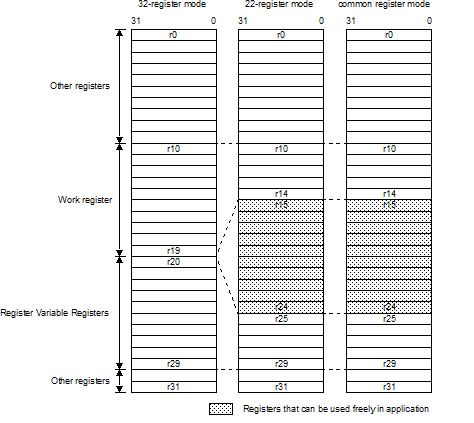The CC-RH provides three register modes. By specifying these register modes efficiently, the contents of some registers do not need to be saved or restored when an interrupt occurs or the task is switched. As a result, the processing speed can be improved. The register modes are specified by using the register mode specification option (-Xreg_mode) of the CC-RH. This function reduces the number of registers internally used by the CC-RH on a step-by-step basis. As a result, the following effects can be expected:
The registers not used can be used for the application program (that is, a source program in assembly language). |
In an application program that has many variables to be allocated to registers by the CC-RH, the variables so far allocated to a register are accessed from memory when a register mode has been specified. As a result, the processing speed may drop. |
Next table and next Figure show the three register modes supplied by the CC-RH.
